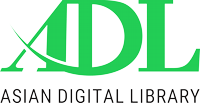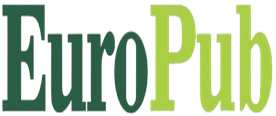English in contact with Pashto and other Pakistani languages: A review of studies on the language interplay
Keywords:
Language Contact in Pakistan, Language Policy, Official and Regional Languages, Pashto Speaking, Well-educatedAbstract
Languages in contact impact each other in multiple ways. Various studies have been conducted to report how the official and the regional languages in Pakistan affect each other. However, they are too scarce to cover the multitude of the languages and the multiplicity of ways in which they influence each other. In this paper, we present a critical review of the available literature to see what languages and type of contact issues have been studied. This gives an indication of the languages and topics that require further study. However, our explicit goal is to indicate gap in the available literature on how English impacts the use and intergenerational transmission of the regional language Pashto in the family domain in some well-educated and well-off Pashto-speaking families living in the regional center Peshawar where the language is the dominant vernacular.
Downloads
References
Abbas, F., & Bidin, S. J. (2022). A critical analysis of language planning and policy (LPP) in Pakistan. Eurasian Journal of Applied Linguistics, 8(1), 85-96.
Abbas, F., & Iqbal, Z. (2018). Language attitude of the Pakistani youth towards English, Urdu and Punjabi: A comparative study. Pakistan Journal of Distance & Online Learning, 4(1), 199-214.
Abbasi, M. H., David, M. K., & Ali, H., M. (2021). Cultural maintenance in the face of language shift- young Sindhi Muslims in Karachi, Pakistan. University of Chitral Journal of Linguistics and Literature, 5(2), 1-15. https://doi.org/10.33195/jll.v5iII.283
Afzal, A., & Rafiq, S. (2022). Impact of Teachers' Instructional Techniques on Students' Involvement in Class: A Case Study. Umt Education Review, 5(2), 184-204. https://doi.org/10.32350/uer.52.10
Ahmad, A., Iqbal, L., Ullah, I. (2020). English language in Pakistan: A policy analysis of past and present of linguistic contact with Urdu and Pashto. Global Political Review, 2, 77-86. https://doi.org/10.31703/gpr.2020(V-II).08
Ahmad, N., Iqbal, L., Ullah, I. (2020). Language domains: The sociolinguistic significance of Pashto-English hybridization. Global Language Review, 5(3), 108-116. https://doi.org/10.31703/glr.2020(V-III).12
Ahmad, N., Iqbal. L., & Atif, M. (2019). Pashto-English contact: The role of suffixation in hybridizing lexical items. Global Regional Review (Grr), 4(4), 629-637. http://dx.doi.org/10.31703/grr.2019(IV-IV).58
Akhtar, H., Fareed, M., & Siraj, S. M. S. (2018). Language-mixing and its process in Pakistani Urdu newspapers. Pakistan Business Review, 20(2), 318-330.
Alam, M. F., & Gill, A. (2016). Pragmatic transfer: An interlanguage study of Pashto and Saraiki English language learners. Gomal University Journal of Research, 3, 143-151
Ali, A., Khan, B., & Awan, N. (2016). Contrastive analysis of the English and Pashto adjectives.
Amin, M., U., Mehmood, A., Ahmad, Z., & Ahmad, R. (2016). Lexical borrowing from local languages in Pakistani legal English: A corpus based study. Science International, 28(4), 647-652.
Anjum, M. U. (2016). Urdu newspapers anglicized in Pakistan – A corpus based study [Unpublished master’s thesis]. Department of English Language and Literature, University of Management and Technology.
Anjum, U., Khan, Q., & Akhter, M. S. (2019). Bilingual education and mobility in Pothwari and Pahari families. Elf Annual Research Journal, 21, 59- 75.
Anwar, B., Rasool, S., & Kamran, M. (2020). Indigenization in multilingual setting: Evidence from Pakistan English written discourse. Pakistan Social Sciences Review, 4(1), 65-78.
Ashraf, H. (2022). The ambivalent role of Urdu and English in multilingual Pakistan: A Bourdieusian study. Language Policy, 22(1), 25-48. https://doi.org/10.1007/s10993-022-09623-6.
Ashraf, M. A., Turner, D. A., & Laar, R. A. (2021). Multilingual language practices in education in Pakistan: The conflict between policy and practice. Sage Open. 1-14. doi.org/10.1177/21582440211004140
Aslam, S., Saleem, T., Afridi, M. S., (2021). Syntactic dominance in Pashto-English bilinguals: An application of Mayer-Scotten’s matrix language frame model. Elementary Education Online, 20(5), 1319-1341. doi: 10.17051/ilkonline.2021.05.147
Baloch, H. A. (2014). Language contact in Balochistan: A sociolinguistic perspective of the Balochi language [Unpublished doctoral dissertation]. Department of Balochi, University of Balochistan, Quetta.
Bashir, E. (2012). Review: “We are here to stay”: Pashtun migrants in the northern areas of Pakistan. Himalayan Linguistics, 11(1), 1-23.
Butt, B., Anwar, B., Tariq, S., & Kanwal, S. (2021). Structural nativization in Pakistani English: Exploring prepositional verb idiosyncrasies. Harf-o-Sukhan, 5(4), 392-402.
Dilshad, S. (2006). Language hybridization and code mixing in Pakistani talk shows. Journal of Research, 10, 29-40. Global Language Review (GLR), 1,74-84. Doi: 10.31703/glr.2016(1-1).07
Hafeez, M. R., Ahmad, A., & Aslam, R. F. M. (2013). Pakistani bilingual undergraduate students' language preferences on social media. Orient Research Journal of Social Sciences, 3(2), 192-203.
Hussain, R., Iqbal, M., Saleem, A. (2022). The linguistic landscape of Peshawar: Social hierarchies of English and its transliterations. University of Chitral Journal of Linguistics and Literature, 6(1), 223-239. https://doi.org/10.33195/jll.v6iI.363
Jamil, A., & Kausar, G. (2021). Code Preference in linguistic landscape: A forensic approach to the top-down signboards. Pakistan Journal of Social Research, 3(4), 446-455.
Kainat, & Khan, S. (2020). Syntactical structure of English and Pashto prepositions: A case of In-On vs Puh-Ke and Puh-Bande. Sir Syed Journal of Education & Social Research, 3(1), 76-88. https://doi.org/10.36902/sjesr-vol3-iss1-2020(76-88)
Khalid, A., & Khan, A. A. (2020). Bilingual identity of Pashtoon immigrants: Insights from Lahore. Global Social Sciences Review (GSSR), 5(4), 1-14.
Khan, A. A. (2015). Bilingual compound verbs and light verbs innovation in Pashto-English code-mixing. British Journal of English Linguistics, 3(1), 24-41.
Khan, A. A., Bukhari, N. H., & Khalid, A. (2018). Pashto-English bilingual data: Testing the diagnostic features for the patterns of codemixing. Kashmir Journal of Language Research, 21(1), 39-59.
Khan, S., Akram, W., Khan, A. (2016). Functions of inflectional morphemes in English and Pashto languages. Journal of Applied Linguistics and Language Research, 3(1), 197-216.
Khan. A. A., Anees, M., Rahman, G. (2020). The patterns of code-switching in Pashto-English bilingual data. Global Social Sciences Review (Gssr), 5(1). Doi: 10.31703/gssr.2020(V-I).13
Khan. A. A., Khalid, A., & Rahman, G. (2020). The integration of embedded language islands in Pashto-English bilingual data. Hamdard Islamicus, 43(1), 439-459.
Khanam, T., & Hussain, S. (2021). Role of linguistic similarity in the acquisition of imperative request form by Urdu Punjabi simultaneous bilinguals: A study of bilingual children living in Lahore, Pakistan. Al-Qamar, 4(4), 169-176.
Lange, N. (2016). Demonstrative contrasts in Hindukush Indo-Aryan [Master’s thesis]. Department of Linguistics, Stockholms Universitet.
Liljegren, H. (2021). The Hindu Kush–Karakorum and linguistic areality. Journal of South Asian Languages and Linguistics, 7(2), 239-285. Doi:10.1515/jsall-2021-2027
Mehmood, N., & Umar, H. (2020). Grammatical gender and its effects on cognition: The case of Pashto bilingual speakers. Pakistan Journal of Languages and Translation Studies, 1, 104-120.
Muhammad, A. Z., & Mahmood, M. A. (2013). Urdu in anglicized world: A corpus based study. International Journal of English and Literature, 4(4), 134-140. Doi: 10.5897/IJEL2012.0383
Mushtaq, A., Baig, A., & Rashid, M. (2021). Status of English language as global language in Pakistan; a study in intercultural domain. Jahan E Tahqeeq, 4(3), 458-471.
Nasir, A. (2020). An exploration into the psycho-social impacts of multilingualism through case studies from the educational and judicial sectors of Pakistan [Doctoral dissertation, Rheinischen Friedrich-Wilhelms-Universität]. Universitäts- und Landesbibliothek Bonn.
Rafi, M. S. (2013). Urdu and English contact in an E-discourse: Changes and implications. Gomal University Journal of Research, 29(2), 78-86.
Rafiq, D., Ahmed, T., & Zaidi, S. (2017). An analysis of language attitude towards code mixing in Makran region of Balochistan. Meeri, 4, 24-40.
Rafiq, S., Iqbal, S., & Afzal, A. (2024). The Impact of Digital Tools and Online Learning Platforms on Higher Education Learning Outcomes. Al-Mahdi Research Journal (Mrj), 5(4), 359-369. https://ojs.mrj.com.pk/index.php/Mrj/article/view/342
Rafiq, S., Kamran, F., & Afzal, A. (2024). Investigating the Benefits and Challenges of Interdisciplinary Education in Higher Education Settings. Journal of Social Research Development, 5(1), 87-100. https://doi.org/10.53664/Jsrd/05-01-2024-08-87-100
Rahman, T. (2009). Language ideology, identity and the commodification of language in the call centers of Pakistan. Language in Society, 38(2), 233-258. doi:10.1017/S0047404509090344
Rashid, M., Robab, M., & Javed, N. (2021). English as a global language and intercultural behaviour in Pakistan: A case study. Elementary Education Online, 20(1), 4677-4689. doi:10.17051/ilkonline.2021.01.505
Saddiqa, A. (2018): The role of Pashto (as L1) and Urdu (as L2) in English language learning. Linguistics and Literature Review 4(1), 1-17. https://doi.org/10.29145/llr/41/040101
Sarfaraz, M. (2021). Lexical variations in Pakistani English: A case study of the novel Twilight in Delhi. International Journal of Linguistics, Literature and Translation, 4(6), 252-260.doi:10.32996/ijllt.2021.4.6.30
Sarfaraz, S., Mansoor, Z., & Tariq, R. (2016). Analysis of grammatical interference and its social acceptability in Pakistani context. Procedia - Social and Behavioral Sciences, 232, 684-688. doi: 10.1016/j.sbspro.2016.10.093
Seifi, P. (2015). Language policy in multilingual and multicultural Pakistan. Advances in Social Sciences Research Journal, 2(3), 32-37.
Shah, M., Malik, S., & Riaz, W. (2019). Multilingual practices from multilingual perspective in Khyber Pakhtunkhwa. Elf Annual Research Journal, 21, 76-99.
Shah, S., & Saboor, A. (2017). Language interaction amongst English, Urdu, Hindko and Balochi. Meeri, 4, 5-23.
Shamim, F., & Rashid, U. (2019). The English/Urdu-medium divide in Pakistan: Consequences for learner identity and future life chances. Journal of Education and Educational Development, 6(1), 43-61.
Shams, S. A., Khan, M., & Shah, M. (2020). The impact of dominant languages on regional languages: A case study of English, Urdu and Shina. Pakistan Social Sciences Review, 4(3), 1092-1106.
Siddiqui, A., & Keerio, A., K. (2019). Analyzing the linguistic components of Pakistani English: An indigenized legitimate English variety. Linguistic Forum, 1(2), 1-11. https://linguisticforum.com/
Sultana, K. (2014). Hybrid language and constructions of modernity in Pakistani advertising discourse. [Doctoral dissertation, The University of Auckland]. The University of Auckland Libraries and Learning Services.
Syed, N., A. (2011). Perception & production of consonants of English by Pashto speakers. Journal of humanities and Social Sciences, 19(1), 119-146.
Syed, S. A., Rahman, G., & Ullah, S. (2020). Language attitude of Pashto speakers towards English. Sir Syed Journal of Education & Social Research (Sjesr), 3(3). 192-197. Doi: 10.36902/sjesr-vol3-iss3-2020(192-197)
Umrani, T., & Bughyo, F.A. (2015). Language policies and role of English in Pakistan. Ariel, 26,114-124.
Yasir, M., & Ghani, M. (2020). Interplay between socio-economic factors and language shift: A study of Saraiki language in D.G. Khan. Research Journal of Social Sciences & Economics Review, 1(4), 411-417. doi: https://doi.org/10.36902/rjsser-vol1-iss4-2020(411-417).
Downloads
Published
Data Availability Statement
Data sharing not applicable to this article as no datasets were generated or analyzed during the current study.
License
Copyright (c) 2025 Dr. Intikhab Alam , Dr. Farrukh Kamran, Muhammad Kamal (Author)

This work is licensed under a Creative Commons Attribution-NonCommercial-ShareAlike 4.0 International License.


































